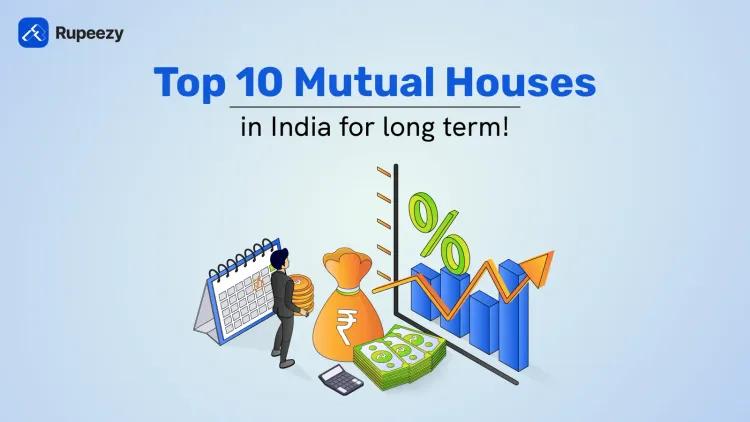SIP vs RD: Which is a Better Investment Option for You?


00:00 / 00:00
Consistent saving and investment is a foolproof method to build wealth. SIP or Systematic Investment Plan and Recurring Deposits are the simplest form of automated, regular and disciplined investing suitable for every investor irrespective of age, risk profile or investment objective. In this article we let us draw a SIP Vs RD comparison and see which one is a better investment option for you.
What is SIP?
SIP is a systematic investment avenue to participate in securities markets in a slow and steady manner to create long term wealth. SIPs are recurring investments in mutual funds preferred by retail as well as HNI investors to automate mutual fund buying. SIP works like an EMI that is deducted from your bank account every month and the amount is invested in your chosen fund.
Advantages of SIP
SIPs are one of the best investment tools for every investor looking to invest in markets. Let enumerate the advantages of SIPs:
1. Disciplined Investment: SIPs are a hassle free way to invest the old school way, slow, steady and regular. Disciplined investing saves time, effort and decision fatigue to wait for the right opportunity or situation. To learn how to invest in SIP, one can follow these steps to make regular, systematic investments that build wealth over time.
2. Rupee Cost Averaging: SIPs follow the concept of rupee cost averaging wherein you invest a fixed amount every month and buy more units when NAV is lower and fewer units when NAV is higher. This ensures overall cost of purchase is averaged out in market ups and downs.
For example, suppose you invest Rs 1000 every month in a MF SIP. The units are allotted at different NAVs as per market levels.
Month | NAV | Units |
Jan | 20 | 50 |
Feb | 23 | 43.47 |
Mar | 19 | 52.63 |
Apr | 25 | 40 |
May | 22 | 45.45 |
Jun | 14 | 71.42 |
Jul | 21 | 47.61 |
Aug | 17 | 58.82 |
Sept | 19 | 52.63 |
Oct | 24 | 41.66 |
Nov | 23 | 43.47 |
Dec | 21 | 47.61 |
After 12 months, the average NAV works out to Rs. 20.17 (total amount invested/number of units) which is lower looking at NAV moving up and down through the year. If you had invested lumpsum Rs 12,000 in Jan, your NAV would have been 20, but if you did not invest and waited for markets to correct, you would have purchased units at potentially higher NAVs and lost time.
Hence, SIPs take away the unpredictability factor in investing and ensures you stay and invest in markets through all cycles averaging your buying cost.
Magic of Compounding: Compounding is the eighth wonder of the world. The longer you stay invested the more return you accrue on principal and interest. SIPs ensure every installment is going to earn a return and growth thereupon. Longer the time, higher the return even with small contributions. For those seeking the best SIP for long term investment, choosing a plan with a proven track record and consistent performance can significantly enhance returns over time.
Let’s take an example. Three friends start investing for retirement. A does SIP of Rs 1000 pm at age 25, B does Rs 2000 SIP at 35 and C starts SIP of Rs 5000 pm at age 45.
Age | A | B | C |
25 | 1,000 per month | – | – |
35 | – | 2,000 per month | – |
45 | – | – | 5,000 per month |
Corpus at 55 (assuming 10% p.a. return) | 22,79,325 | 15,31,394 | 10,32,760 |
Invested Amount | 3,60,000 | 4,80,000 | 3,60,000 |
Assuming a return of 10% per annum, at age 55, A has accumulated a higher corpus even with the smallest contribution.
Automation: SIPs bring a huge advantage of automating your investments in equity markets. There is no need to watch the trends, economy, news or stock prices. SIP mitigates the role of willpower and makes equity investing hassle free. You can set up a mandate for the amount to be debited from your bank on a fixed date and money is swiped and invested automatically.
Flexibility: SIPs investments are flexible, you can open an SIP with a minimum amount of Rs 100 and for a frequency ranging from one day to weekly, monthly or quarterly. The tenure for open ended funds is unlimited, and there is no restriction on the amount you can invest. Also, you can stop the SIP anytime or pause sometime. Units can be redeemed as soon as they are allotted. SIPs are fairly simple to enroll in. Go to the Rupeezy app, open an account in a few minutes and select your favorite funds to begin SIP contributions.
Analyse fund performance vis-a-vis risk with the Smart Explore feature on Rupeezy app.
What is RD?
A Recurring Deposit is a banking product popular among masses from a time when investment options were limited and bank FDs delivered double digit returns. A recurring deposit is a periodic saving in a bank deposit for a specific period with fixed interest rate decided at the time of opening. RD is a simple savings product with zero to low risk and fixed return. All banks offer a recurring deposit along with their fixed deposit products.
Advantages of RD
RD is the simplest investment tool available, let’s have a look at the advantages of a recurring deposit.
1. Convenience: RD is one of the safest routes to channel small monthly savings from your bank account into a deposit that offers better return compared to a savings account or vanilla products. Instead of waiting to accumulate a larger sum for FD, RD helps in creating a pool of money consistently with small contributions.
2. Safety: RD offers zero almost risk to principal and interest, the interest rates are fixed and there is zero volatility irrespective of economic factors or events. Since RDs are opened with banks, these are under RBI and government purview with nil chances of default.
3. Interest Rate Lock-In: RDs also help investors to lock in interest rates for a long time. Once an RD is opened for a fixed rate, it can’t change even if interest rates fall in future. This gives return assurance to investors especially in volatile economic conditions.
4. Compulsory Saving: RDs are excellent tools to save and invest for a financial goal in future with fixed contributions, lock-in period and some restrictions on frequent withdrawals.
5. Quarterly Compounding: Interest on RD is compounded quarterly benefiting the investor over the long term while most regular bank deposit interests are compounded annually.
6. Loan against RD: Some banks offer a loan against an RD to offer liquidity to depositors for emergency financial needs.
RD vs SIP Comparison Table
Let us evaluate the difference between SIP and RD in terms of features, benefits and risk.
Feature | SIP | RD |
Asset Class | SIPs are mutual fund products that invest in stocks, bonds, indices, or other assets. | RDs are a type of fixed deposit maintained with scheduled banks. |
Return | SIPs have the potential to deliver higher than average returns since they invest in equities, bonds, a mix of both. In last 10 years, best large cap SIPs delivered returns of 14-18% per annum. | RD returns are fixed as per a bank’s schedule of returns on fixed deposits. Currently banks offer a maximum RD interest rates of up to 7-7.5% per annum as per tenure. |
Risk | Since SIPs are mutual funds investments in securities market, there is inherent risk involved due to market fluctuations and a possible loss of principle. | RDs are almost risk free deposits with banks with stable and fixed returns and no risk to principal amount. RDs are best if you are looking for zero risk steady return. |
Quantum of Investment | You can set up an SIP for amount as low as Rs 100. It is affordable and convenient for any investor. | It is possible to set up a RD for minimum amount of Rs 100 to Rs 500 varying from one bank to another. |
Investment Frequency | You can set up SIPs and contribute on a daily, weekly, monthly and quarterly basis and select date of contribution while signing up. | RDs usually have a frequency of monthly contributions deducted from your bank account. |
Lock-In | There is no lock in period for open ended SIPs. Only tax saving MF schemes have a lock in period of three years. | RDs have a lock in period from one month to 3 months depending on bank’s terms. Any withdrawals made during lock-in do not earn any interest. |
Tenure | There is no fixed tenure for a SIP, you can set up SIPs for a perpetual period in open ended funds. Amount invested | RDs have a fixed tenure usually ranging from six months to 10 years. Once you open a RD for a tenure, it can’t be changed until maturity. |
Liquidity | SIPs are mutual funds traded on stock exchange. They are highly liquid and can be redeemed anytime once units are allotted. | RDs are fixed tenure instruments with a lock-in and maximum term. RDs are meant for long term saving and offer lesser liquidity compared to SIPs. |
Penalty | There is no penalty if you redeem your SIPs anytime once the units are allotted. The redemption can be done anytime at the day’s prevailing NAV. You can cancel an SIP anytime. | Premature withdrawals are restricted in RDs and attract a penalty. RD can be closed prematurely after a minimum term and with penalty as per every bank's terms. |
Tax Liability | Equity SIPs redeemed after 12 months from purchase date attract long term capital gain tax of 10% and short term capital gains tax of 15%. The capital gains tax is exempt for gains up to Rs 1 lakh. Debt SIPs are taxed as per income tax rate. | RDs attract a TDS of 10% on interest above Rs 10,000 in a financial year. The interest income from RD is considered part of individual’s income and taxed as per slab rates. |
Ease of Operation | You can set up an SIP through various means e.g. mutual funds’ websites, brokers, online platforms, banks, financial institutions, agents etc. SIP sign up is simple, KYC and form is all you need. | RDs can be opened with any bank. You need to have a bank account and fill RD opening form to start an RD. SOme banks also offer RDs through their websites and apps. |
Suitable for | SIPs are suitable for investors looking for above average returns and also willing to take some risk. SIPs can be part of any portfolio, even conservative investors can participate in equity markets through SIPs. | RDs are suitable for very conservative investors who would not like to take any risk with their principal and expect fixed, stable returns. |
SIP vs RD: Which is Better?
Now, are you wondering which option is better SIP or RD? It depends on your risk appetite, investment objectives and time horizon.
For example, if you want to save for your son’s tuition fee due after 2 years, RD is a better option as you can save a defined sum with a fixed lump sum at the end of the tenure. SIPs value may fluctuate with the market and jeopardise the fee payment.
On the other hand if you want to save and invest for retirement a couple of years away, equity SIP will add growth potential and higher returns to your portfolio while market fluctuations average out over the years and compounding works its magic.
From a taxation perspective, SIPs score over RDs as long term capital gains tax is lower compared to RD interest taxed at income slab rates.
Also Read: Difference Between SIP And Mutual Fund
Conclusion
To summarise, SIPs are the best option to invest in equity markets consistently, averaging the volatility, bringing in benefits of compounding and staying disciplined through market cycles. Even for conservative investors SIPs work well by mitigating risk and holding a slow and steady investing style. RDs are risk proof and best to save for fixed investment goals where you need sacrosanct and predictable returns.
Download Rupeezy app, your personal MF Lab. Now DIY your mutual fund SIPs in a few clicks.
The content on this blog is for educational purposes only and should not be considered investment advice. While we strive for accuracy, some information may contain errors or delays in updates.
Mentions of stocks or investment products are solely for informational purposes and do not constitute recommendations. Investors should conduct their own research before making any decisions.
Investing in financial markets are subject to market risks, and past performance does not guarantee future results. It is advisable to consult a qualified financial professional, review official documents, and verify information independently before making investment decisions.

All Category









